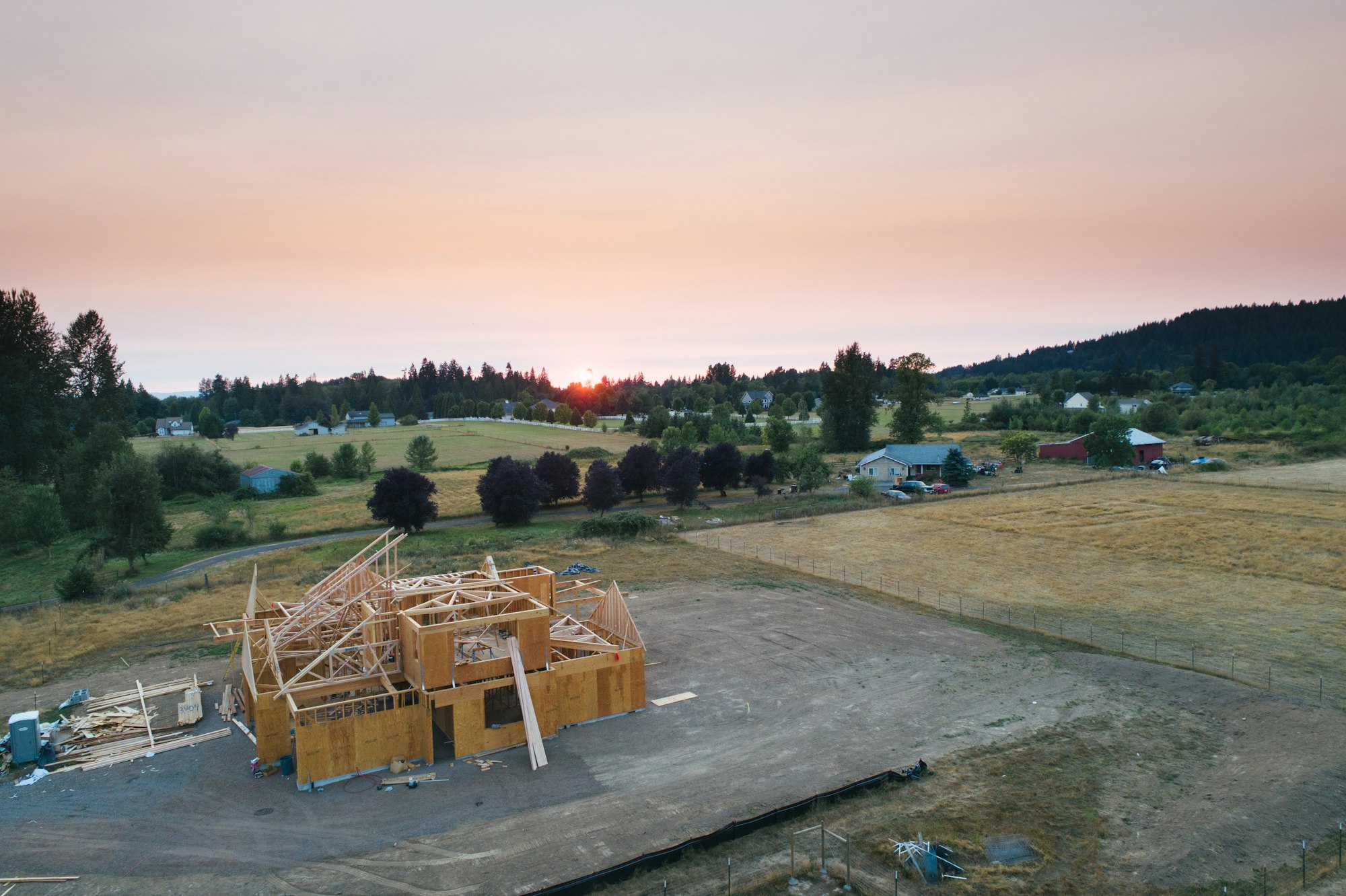Even if you’re not sure you’ll use it or feel it’s too detailed, a quick read-through might spark some ideas.
Knowing what your buying, what to expect before your builder lets you know your site costs will put you in a powerful position to move forward from a fully informed position.
Don't be surprised, get informed! Know before you need to with this simple yet effective land assessment checklist.
👉️ See the link to the checklist below and above the FAQ section

Introduction
Buying land to build your new home is a huge step, and it’s easy to feel swept up in the excitement. But before you get too far into planning your house layout, there are a few important things to consider—things that can impact your time, budget, and even the quality of your future home.
That’s why we created this checklist, a straightforward way to evaluate potential sites and compare one against another. Think of it as your toolkit to catch any potential headaches before they happen.
This checklist covers the big factors: everything from location and zoning to what’s happening underground. It’s designed to help you avoid surprises, keep your costs down, and give you confidence in your choice. Buying land is a big deal, and knowing exactly what you’re getting into will set you up for success.
Why? Evaluating multiple sites against the same criteria can reveal hidden costs and prevent surprises. A little planning now goes a long way.
Section 1: Location Factors
When it comes to buying land, location really is everything. The right spot means you’re not only close to the things that make life easier and more enjoyable but also investing in an area that’s likely to hold its value.
Think about how your daily life will feel in this location: are there good schools nearby? Is it easy to get to work or the shops? These are the kinds of questions that can help you see the full picture of your future home’s surroundings.
Here’s a quick rundown of what to consider:
- Public Transport: Being close to a bus stop or train station might not seem important right now, but it can save you time, money, and stress down the line, especially if you’re commuting or expecting visitors regularly.
- Access to Amenities: Look around for essentials like grocery stores, shopping centres, gyms, and parks. When these conveniences are just a short drive or walk away, they add ease to your everyday life. Plus, they can bump up the property value in the long run.
- Lifestyle and Resale Value: A well-located property isn’t just nice to live in—it can also make for a great investment. Being in a popular area or close to amenities generally means that your property is more attractive to future buyers. Think of it as a way to make your money work for you over time.
Why Location Matters: A good location means convenience and a solid investment. It’s all about finding a spot that works for you now and can pay off in the future, too.
Ensure water, sewer, and power services are accessible. Unexpected utility setups can add time and cost to your build.
Section 2: Zoning and Services
Let’s talk zoning and services—a fancy way of saying, “Can you actually build what you want here?” and “Are the basic utilities already set up or soon to be?” Both are key to making your land-buying process smoother and can save you some big headaches.
Here’s what to look out for:
- Zoning Basics: Each area has its own zoning regulations that outline what you can and can’t build. For example, some areas are strictly residential, while others allow commercial spaces. It’s also worth checking what’s nearby; the last thing you want is a noisy business opening up next to your dream home. A quick search of your local council website (planning and development department) can help clear things up.
- Water and Sewer Connections: Access to water and sewer is another biggie. Ideally, the land is already set up with council water and sewer lines, but that’s not always the case. If you need to install a water tank or a septic system, that could add some unexpected costs, so it’s smart to ask about these details upfront.
- Power Access: Getting your power connected can be straightforward—or not. If the land is already wired for power, great! If not, you might need to bring in power from further away or get permissions for easements (special rights of way). And if there are obstacles, like other buildings, it might mean negotiating with neighbours or even working with the power provider for a new connection.Overhead power requires a few more forms and a property pole. Distance from the mains is also a consideration, the further away the more expensive it can be to run cable or the need to install submains (on larger sites/rural properties).
- Extra Services: Don’t forget other utilities like gas, internet, or communication/NBN/fibre optics. These services are often taken for granted but can make a big difference in how comfortable and connected you’ll feel once you’re living there.
Why Zoning and Services Matter: Knowing the zoning and utility setup gives you a clear picture of what’s possible on your land and prevents any nasty surprises later on. These checks make sure you’re not buying into a situation where costs or restrictions limit what you can do.
Soil type, compaction, and site history may not be visible, but they impact stability and construction costs. Get the facts!
Section 3: Site, Soil, and Substrata
Let’s get into the nitty-gritty—literally! When you’re buying land, understanding what’s beneath the surface is as important as the location. The type of soil, site history, and underlying layers can all impact how easy (or tricky) your construction will be. These factors can affect everything from building costs to long-term stability, so it’s worth getting up close and personal with the ground beneath your feet.
Here’s what to look for:
- Soil Type: Different soil types react differently to weather and weight, which can influence the foundation of your home. Soil classifications range from stable (Class A) to highly reactive (Class H2 or E), with more reactive soils potentially leading to more extensive foundation work. If you’re not sure about the soil on your land, a soil test can give you the answers you need.
- Compaction Certificates: Compacted soil is key to a stable foundation. Check if a compaction certificate is available for the site, which confirms that the soil is dense and sturdy enough to support a building. If you don’t have this certificate, you might face additional compaction work (and costs) down the line.
- Site History: This one’s important and often overlooked. Some sites might have old mine shafts, tunnels, or even bodies of water below them. This history can create risks of subsidence (land sinking), which could lead to structural issues in the future. A little research goes a long way in understanding if there are any past surprises lurking underground.
- Environmental Factors: Other factors like acid sulfate soils or flood risk areas can impact your land’s suitability for building. Acid sulfate soils can be corrosive, and if your site is in a flood-prone area, you’ll likely need to meet elevation requirements to protect against water damage.
Why Soil and Site History Matter: Understanding the soil and site characteristics can prevent costly foundation issues and ensure your home stands strong over time. It’s like building on a solid foundation—literally and financially!
Overlays like heritage or environmental protections can mean extra steps. Understanding these now prevents unexpected delays and a better understanding of cost implications.
Section 4: Overlays and Environmental Protections
Once you’ve got a handle on the soil and site conditions, it’s time to look at any environmental and regulatory overlays that could impact your plans. These are specific protections or regulations placed on certain areas that aim to preserve natural features or manage risks. Knowing if your land falls under any overlays will give you a heads-up on potential limitations, added costs, or construction requirements.
Here’s what to check for:
- Heritage and Environmental Protections: In Australia, some sites have heritage overlays, which protect historical buildings, natural habitats, or landscapes. If your land or surrounding areas have heritage-listed features, there could be restrictions on what you’re allowed to build or alter. Environmental protections may also include flora and fauna preservation areas, which protect specific plants, animals, or habitats.
- Tree Preservation Orders: If there are significant trees on the property, there might be a preservation order in place. While trees can add beauty and value, they may also limit your building options or require you to design around them. Removal or alteration of these trees could require council approval.
- Bushfire Prone Areas: In Australia, bushfire zones are a real concern, and if your land is in one, there are special building standards to follow. This can mean selecting fire-resistant materials or maintaining buffer zones around your home. It’s essential to be aware of these requirements to keep your home and family safe.
- Flood Zones and Land Slip Risks: Certain areas are prone to flooding or land slips, which may require specific construction techniques or approvals. For example, you may need to build above a certain elevation if the land is prone to flooding. For landslip-prone zones, reinforcing or stabilising the structure might be necessary to prevent movement over time.
Why Overlays Matter: These overlays aren’t just red tape—they’re there to protect important environmental and safety factors. Understanding these overlays can help you plan better and avoid potential roadblocks or fines down the line.
Noise can affect not just your comfort, but resale value too. Be sure to test the area at different times of day!
Section 5: Noise Considerations
Noise might not be the first thing that comes to mind when you’re choosing a piece of land, but it can make a big difference in how comfortable and peaceful your home will feel. Imagine settling into your dream home only to discover it’s right under a busy flight path or next to a planned highway extension and not having the correct sound treatment (acoustic) requirements installed. Taking noise into account now can save you from future frustrations and help you make an informed choice.
Here’s what to listen out for (literally):
- Transport Noise Corridors: Is your potential land near a major road or highway? Traffic noise can be a constant hum in the background, especially during peak hours. Check if there are plans for future road expansions, as new transport corridors can introduce more noise.
- Airports and Flight Paths: While being near an airport can be convenient, you may have to deal with aircraft noise. Even small airports or flight paths for light planes can create noticeable noise. Ask around or visit the area at different times to get a feel for what you might hear once you’re living there.
- Train Lines and Future Infrastructure: If there’s a train line nearby, keep in mind that the sound of trains (and their horns) can carry quite far, especially in quiet areas. Also, check local development plans to see if any new train lines or transport hubs are planned for the future.
Why Noise Matters: Noise impacts comfort and can affect resale value. Taking the time to assess these potential disturbances can ensure your new home is as peaceful as you imagine.
Buying land is about more than the view. A thorough checklist ensures you’re ready for any challenges—and sets you up for success.
Conclusion
Buying land is an exciting journey, but it’s also one that requires careful thought and planning. By using this checklist, you’re setting yourself up for a smoother, more informed land-buying process. Each factor we’ve covered—from location and zoning to soil conditions and noise levels—plays a role in shaping your future home’s comfort, cost, and quality.
Taking the time to evaluate each aspect now can help you avoid unexpected expenses, ensure compliance with local regulations, and ultimately choose a site that aligns with your vision. Remember, knowledge is power. With this checklist in hand, you’re empowered to make a choice you’ll be happy with, giving you confidence as you embark on building your dream home.
🔖 Members Access this Checklist and all future checklists from this page
You must be logged in to view the content, click the button for the checklist you want then follow the prompts to download or copy and past this link into your browser - https://www.constructor.net.au/checklists/
FAQ Section
- Why is it important to check the soil type before building?
- Different soil types react differently to moisture and weight. Knowing the soil type helps determine the foundation requirements, which can save costs and prevent future issues.
- How do I find out about zoning regulations in my area?
- You can check zoning regulations with your local council. They can provide maps and details on how the land and surrounding areas are zoned.
- What utilities should I confirm before purchasing land?
- Key services to check for include water, sewer, power, gas, and internet. Lack of access to any of these services may mean additional setup costs.
- How does living near a noise corridor impact daily life?
- Noise corridors, like highways or flight paths, can lead to constant background noise, which may reduce comfort and even affect property value.
- What are environmental overlays, and why do they matter?
- Overlays are regulations that protect certain environmental or heritage features. They can restrict what you can build or require special approvals.
- How can I tell if my land is in a flood zone?
- Flood zone information is available from local councils. This data shows areas at risk of flooding and may require certain construction measures.
- What should I do if there’s a heritage listing on the land?
- Heritage listings protect historic structures or areas. Building or altering such sites usually requires approval, and there may be limitations on what changes you can make.
- Are bushfire zones a big concern in Australia?
- Absolutely. If your land is in a bushfire-prone area, you’ll need to follow strict building codes to ensure safety, such as using fire-resistant materials.
- Can I remove trees from the property if they’re in the way?
- Tree removal often requires council approval, especially if there are preservation orders. It’s best to check with local authorities before planning any tree removal.
Further Reading


















